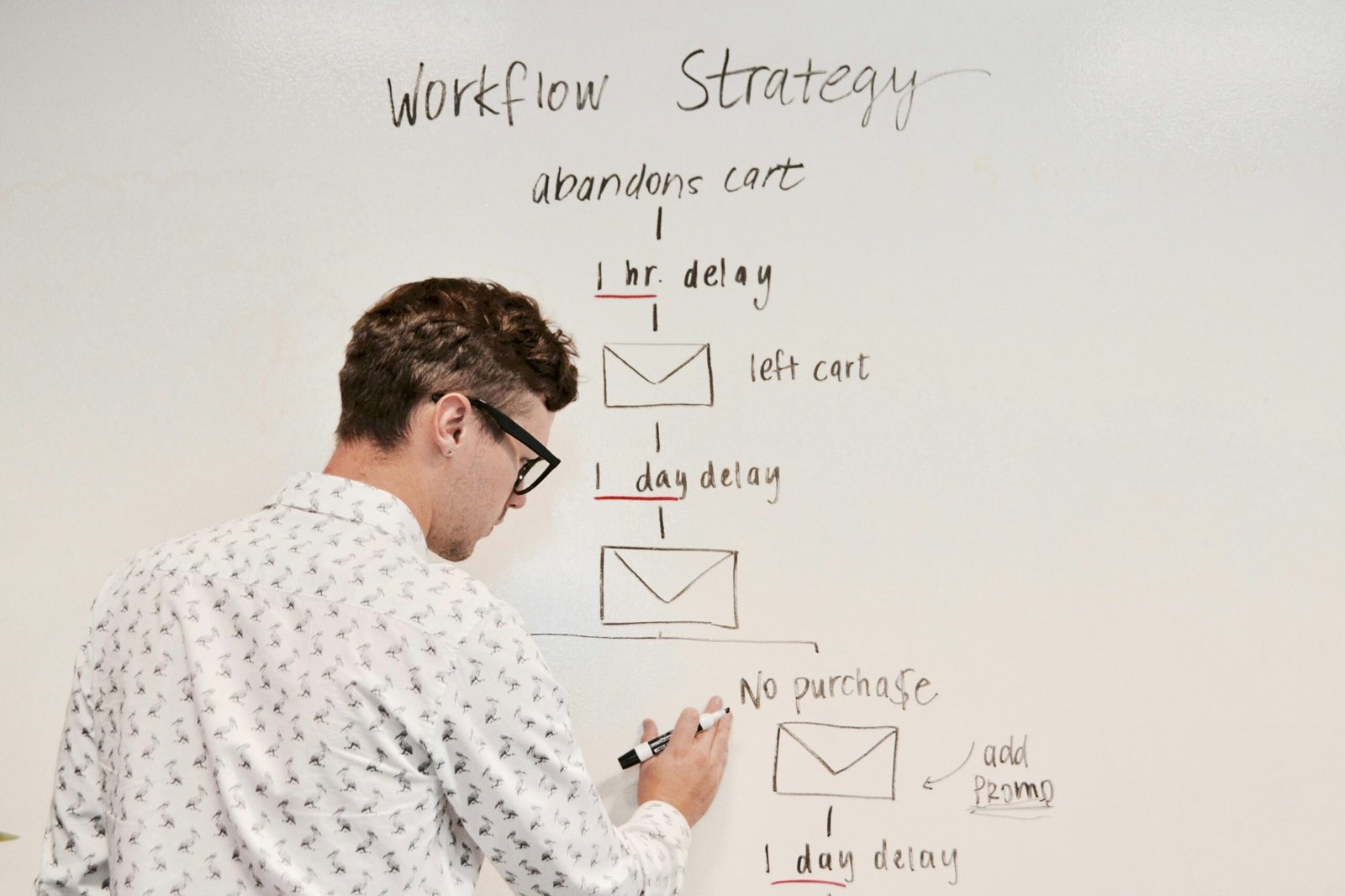Effective SaaS Drip Campaigns for Lead Nurturing
Introduction to SaaS Drip Campaigns
SaaS drip campaigns are automated email sequences designed to guide potential customers through their buyer journey while nurturing leads and educating them about the software-as-a-service (SaaS) offerings. These targeted communications deliver relevant content at strategic intervals, ensuring that leads receive the right information at the right time. By employing systematic engagement, SaaS companies can maintain continuous contact with prospects, fostering relationships that enhance the likelihood of conversion.
The key purpose of SaaS drip campaigns is to keep leads informed and engaged throughout their decision-making process. For example, new leads may receive introductory emails explaining the core benefits of the service, while those further along the journey might obtain case studies and testimonials that address specific pain points. This tailored approach allows potential customers to appreciate the value of the SaaS product and aids in their evaluation process.
Moreover, effective lead nurturing through drip campaigns involves segmenting the audience based on various criteria such as their interests, behaviors, and stage in the buyer journey. This personalization ensures that each lead receives content that resonates with their unique needs, thus enhancing their experience. Additionally, automated email sequences can be timed based on user interactions; for instance, if a lead clicks on a particular resource, they can be directed to related materials—creating a seamless flow of information that promotes informed decision-making.
By strategically implementing SaaS drip campaigns, companies are positioned to cultivate trust with prospects, encouraging them to remain engaged and move through the sales funnel. The ultimate goal is to drive higher conversion rates, transforming prospects into loyal customers through consistent, informative engagement tailored to their specific needs and interests.
Understanding Lead Nurturing
Lead nurturing is a marketing approach that involves developing relationships with potential customers at every stage of the sales funnel. This strategy is particularly crucial for Software as a Service (SaaS) businesses, which often rely on subscription models where customer retention significantly impacts revenue. By nurturing leads, organizations can guide prospects toward making informed purchasing decisions while simultaneously building brand loyalty and trust.
At its core, lead nurturing differs from traditional marketing strategies, which often focus on directly converting leads into customers. Instead, lead nurturing prioritizes engagement and education, ensuring that prospects receive relevant content tailored to their needs. This approach fosters a better understanding of the product or service, enabling informed decisions. Various methods of lead nurturing include email campaigns, personalized content offers, webinars, and targeted social media interactions. Each touchpoint serves to reinforce the brand’s value proposition while promoting continuous engagement.
For SaaS businesses, effective lead nurturing contributes to enhanced customer relationships. By understanding the specific pain points and objectives of potential customers, companies can provide targeted solutions and relevant information, positioning themselves as trusted partners. This not only increases the likelihood of conversion but also drives higher engagement rates. Moreover, the impact of lead nurturing extends beyond the immediate sales cycle; as customers feel valued and understood, they are more likely to remain loyal, ultimately increasing their lifetime value.
In conclusion, the significance of lead nurturing for SaaS businesses cannot be overstated. By implementing effective lead nurturing strategies, these organizations can build enduring customer relationships, optimize engagement, and drive sustainable growth in an increasingly competitive landscape.
Setting Goals for Your Drip Campaign
Establishing clear objectives is imperative for the success of any SaaS drip campaign. The goals you set should be specific, measurable, attainable, relevant, and time-bound (SMART). This framework ensures that each objective aligns with your overall business strategy and effectively addresses the needs of your target audience. For instance, one objective may be to increase product usage among current users. By setting this goal, you can design a sequence of drip emails tailored to highlight underutilized features, offering tutorials, tips, and best practices that encourage user engagement.
Another common goal is to educate users about product features. By informing them about the functionalities that can facilitate their workflows, you can enhance the user experience and increase satisfaction. This is vital in a SaaS environment where user retention is heavily dependent on finding value in the product. Consider a series of emails that introduces new features, explains their benefits, and shares success stories from other users.
Moreover, converting free trial users into paying customers is a crucial goal for many organizations. To achieve this, your drip campaign should include a thoughtful structure that nurtures these leads by addressing their concerns and demonstrating the product’s value proposition. Timely follow-ups that remind users of their trial expiration date, coupled with offers or incentives to upgrade, can effectively drive conversions. Additionally, personalizing the content based on user behavior during the trial period can significantly enhance the likelihood of transition from trial to paid status.
In summary, setting well-defined goals for your SaaS drip campaigns not only facilitates better lead nurturing but also aligns your marketing strategies with overarching business objectives. The clarity these goals provide allows for focused campaign development, ensuring that your communications effectively resonate with your audience and promote desired actions.
Segmenting Your Audience
Audience segmentation is a critical component in crafting effective SaaS drip campaigns aimed at lead nurturing. By dividing your audience into distinct segments based on shared characteristics, businesses can develop tailored messaging that speaks directly to the needs and preferences of each group. This personalized approach not only enhances engagement but also significantly increases the likelihood of conversions.
One common strategy for segmentation is demographic segmentation, which involves categorizing your audience based on age, gender, income level, and education. Understanding these factors can help you create messages that resonate with your target audience’s lifestyle and interests. For example, a SaaS tool aimed at young entrepreneurs might highlight features that enhance productivity and collaboration, whereas a more established business might prioritize advanced analytics and reporting capabilities.
Behavioral segmentation is another effective strategy, focusing on how individuals interact with your brand. This method analyzes customer data, including purchase history, product usage, and the level of engagement with previous marketing materials. By understanding how leads behave towards your offerings, you can customize drip campaign content to provide targeted information that addresses their specific concerns. For instance, a user who frequently engages with instructional videos may respond positively to additional resources that enhance product usability.
Psychographic segmentation takes this a step further by exploring the motives, values, and interests of your audience. By identifying the psychological characteristics that drive individual behavior, businesses can allocate marketing resources more effectively, leading to higher engagement rates. Tailoring your messaging around these insights ensures that leads feel understood, fostering a deeper connection between the customer and your brand.
In conclusion, by implementing strategic audience segmentation—demographic, behavioral, and psychographic—businesses can enhance their SaaS drip campaigns. This approach allows companies to create effective lead nurturing strategies that resonate with each segment, ultimately optimizing engagement and improving conversion rates.
Crafting Compelling Content for Emails
Effective email content is a critical component of successful SaaS drip campaigns aimed at lead nurturing. To engage potential customers, it is essential to adopt a tone of voice that resonates with the audience while reflecting the brand’s identity. A conversational yet professional tone can foster a connection, making leads feel valued and understood. This tone should remain consistent across all communications to build brand loyalty and trust.
One of the key elements of compelling email content is a clear and persuasive call-to-action (CTA). A strong CTA motivates recipients to take the desired next step, be it signing up for a webinar, downloading educational materials, or exploring new features. The CTA should be prominent and tailored to align with the specific goal of each email in the drip campaign, guiding leads smoothly down the sales funnel.
In addition to the tone and CTA, providing educational materials is paramount in SaaS drip campaigns. Leads are more likely to engage when they receive valuable insights that help them solve problems or enhance their professional knowledge. Offering resources such as eBooks, whitepapers, and how-to guides not only showcases the benefits of the product but also positions the brand as an industry expert.
Moreover, keeping leads informed about product updates is vital. Highlighting new features or improvements can demonstrate the brand’s commitment to continuous enhancement and customer satisfaction. Equally important are customer testimonials, which serve as social proof to validate the product’s value. Sharing success stories can inspire confidence and encourage leads to envision how the product may benefit their needs.
Lastly, incorporating personalized recommendations based on user behavior or preferences can significantly enhance engagement. By leveraging data analytics, brands can tailor content to their audience, making communications more relevant and impactful. By integrating these elements strategically, SaaS companies can communicate value effectively and maintain lead interest throughout the drip campaign.
Designing the Drip Campaign Workflow
Creating an effective drip campaign workflow is a methodical process that involves careful planning and execution. The foundation of a successful workflow lies in understanding the target audience and their behaviors, which allows marketers to craft messages that resonate with specific segments. Establishing a sequence for the emails is crucial; this typically begins with a welcome email which sets the tone and informs leads of what to expect. Following this, a series of informative and engaging emails should be scheduled, spaced out appropriately to maintain interest without overwhelming the recipient.
Timing plays a pivotal role in the effectiveness of a drip campaign. The intervals between emails should align with the typical decision-making process of potential customers. For example, when nurturing leads in the SaaS industry, it may be beneficial to use a staggered approach where content is prioritized based on the user’s stage in the buyer’s journey. Observing user interactions, such as email opens or clicks, can provide valuable insights into the optimal timing for subsequent messages.
Triggers based on user behavior are another essential component of a well-designed drip campaign workflow. Employing automated systems allows businesses to send emails in response to specific actions taken by leads—such as signing up for a webinar or completing a specific task within the product. This level of personalization not only fosters engagement but also increases the likelihood of conversion. Additionally, leveraging analytics is imperative to continually refine the workflow. Analyzing metrics such as open rates, click-through rates, and conversion rates enables marketers to adjust their strategy promptly, ensuring that they deliver the right message at the right time. This iterative approach contributes to the ongoing success of the campaign, aligning closely with the objectives of lead nurturing.
Measuring Success and Key Metrics
Measuring the success of SaaS drip campaigns is crucial for understanding their effectiveness and determining areas for improvement. There are several key performance indicators (KPIs) that should be monitored to evaluate the performance of these campaigns. One of the primary metrics is the open rate, which signifies the percentage of recipients who opened the emails. A higher open rate generally indicates that the subject lines are engaging and relevant to the target audience.
Another essential metric is the click-through rate (CTR), calculated by dividing the number of clicks by the number of emails delivered. This metric helps gauge how well the content resonates with the audience and whether the call-to-action effectively prompts the desired engagement. A strong CTR suggests that users are interested in the information provided, thereby reflecting the campaign’s efficiency in guiding leads through the sales funnel.
Conversion rates also play a vital role in assessing the success of drip campaigns. This metric measures the percentage of leads that take a specific action, such as signing up for a trial or making a purchase. A high conversion rate is a clear indication that the campaign effectively nurtures leads towards becoming customers, showcasing the direct impact of the design and content of the emails sent over time.
Additionally, gathering customer feedback through surveys or direct interaction can provide valuable insights into what resonates with recipients. Feedback can inform future campaigns, allowing marketers to refine their strategies for enhanced engagement and outcomes.
Continuously analyzing these metrics is essential to optimize campaign performance. By regularly assessing key metrics, companies can adapt their approaches, ensuring that their SaaS drip campaigns are not only effective but are evolving with the changing preferences of their audience.
Best Practices for SaaS Drip Campaigns
Creating effective SaaS drip campaigns requires a thoughtful approach that leverages best practices to enhance lead nurturing. One of the fundamental strategies is to maintain consistency in messaging throughout the campaign. This involves aligning the tone, style, and content of each email with the overall brand identity. Consistent messaging helps reinforce your brand image and builds trust with potential customers.
Another critical aspect is ensuring mobile-friendliness. With an increasing number of users accessing emails via mobile devices, it is essential that your drip campaigns are optimized for smaller screens. This entails responsive design, concise content, and easily clickable call-to-action buttons, ensuring a seamless experience for users on the go.
A/B testing should also be incorporated into your drip campaign strategy. By experimenting with different subject lines, email formats, and content, you can gather valuable insights into what resonates most with your audience. This data-driven approach allows marketers to refine their messaging and improve open and click-through rates over time.
Additionally, it is imperative to comply with email regulations, such as the CAN-SPAM Act or GDPR, depending on your target audience’s location. This includes obtaining consent from recipients and providing a clear opt-out option in every email. Compliance not only protects your organization from legal issues but also enhances your credibility with potential leads.
Finally, personalizing the customer experience can significantly increase the effectiveness of your SaaS drip campaigns. Utilizing data to tailor content to the individual preferences and behaviors of your leads can foster a more engaging experience. Techniques include using the recipient’s name in the subject line, segmenting lists based on user actions, and providing relevant resources that align with their interests.
Case Studies and Examples
Analyzing successful SaaS drip campaigns offers valuable insights into effective strategies for lead nurturing. One notable example is the case of Slack, a collaboration platform that utilizes a multi-step drip campaign to engage new users. Upon signing up, users receive a welcome email that introduces Slack’s features and provides resources for getting started. This initial touchpoint is followed by a series of emails over several weeks, each designed to guide users through specific features, ultimately encouraging them to integrate Slack into their daily workflow. The well-timed intervals between emails ensure that users remain engaged without feeling overwhelmed.
Another exemplary case is HubSpot, a leading marketing software provider. HubSpot employs a highly personalized drip campaign targeting different segments of their audience. For instance, new customers receive onboarding emails that not only introduce them to the platform but also outline best practices tailored to their specific needs. As users advance in their journey, the content evolves to highlight more advanced features and integrations. This strategy not only nurtures leads but also enhances user retention by ensuring customers find ongoing value in their subscription.
A different approach can be observed in the drip campaigns leveraged by Trello, a project management tool. Trello sends a variety of educational content through its drip series, focusing on the versatility of its boards. By sharing user stories and practical tips, Trello effectively showcases how different industries can benefit from their platform. This value-driven content fosters an emotional connection with users, encouraging them to engage more deeply with the product over time.
These case studies exemplify the importance of tailoring drip campaigns to meet the unique needs of users at different stages of their journey. By analyzing successful implementations, SaaS companies can learn how to create impactful drip campaigns that not only nurture leads but also drive long-term customer relationships.







